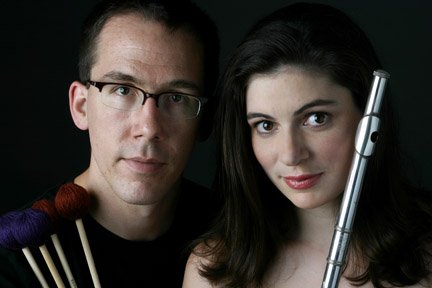
I ’m working now with some very high-pitched material... It’s seeming likely that I’ll end up with something for two soprano saxes, with some high multiphonics cascading on top of one another. Right now, the form is seeming like it will consist of some close intervals that slowly open up and out, with focus on some intricate tuning adjustments or quarter-tones. There will likely also be a few little ascending and descending lines as the piece progresses, and the whole thing will probably end up being close to 100 seconds. My plan is to take my thin electronics part and try to flesh out the ‘live’ part a bit more.”T he thing that troubles me about the analysis in Peter Kivy’s new book is that it seems to crystallize both music and text—holds them, for the sake of analysis, to be ‘static’ when in fact they are dynamic and ‘emergent’, particularly when the material is new to us. Implicitly, the analysis undervalues the processes of remembering or forgetting—of retrieval, of dissipation. In other words, the ‘ancient quarrel’ between literature and music seems to depend on our ignoring major aspects of neurobiology and how our cognitive processes handle qualitative complexity. Dependent, too, on our ignoring not just the emergent aspects of reading, playing, and hearing the piece, but the emergent aspects of the compositional process itself—embodied by remarks like the ones that composer Jeff Herriott makes in his blog (blockquote above).
— Jeff Herriott blog, 28-APR-2009.
T his thought occurred to me as I listened to Jeff Herriott’s ‘dissipation of a thought’, right after finishing reading Peter Kivy’s book.
H erriott’s compositions are often surprisingly textual—even the ones that are wordless, instrumental pieces. How can we know this? Well, text linguistics studies structural and formal variants of textuality, for which separate descriptive and ontological models are developed beyond surface-level syntax. A ‘text’ is defined as an utterance or communicative occurrence that meets [most of] seven criteria of text-ness (Beaugrande & Dressler, 1981):
- Expressive cohesion,
- Coherence,
- Intentionality,
- Acceptability/Consensuality,
- Informativity (conveying something or bringing about a change in [many of] the text’s readers/hearers),
- Situationality, and
- Intertextuality, including persistence and/or replication-publication.
[‘dissipation of a thought’, for flute, vibraphone, cymbals, crotales, voice and live electronics]

T he structure of ‘dissipation of a thought’ meets most if not all of the seven criteria above. It is not only a ‘text’ in the sense of a persistent, published, replicable, intertextual document. It is coherent, cohesive, and localized to a situation or context. The intentions... may be ambiguous, but the evocative title is enough to focus our reception of the piece, beyond what the music itself does.
T he hermeneutic ambiguity in the first section of ‘dissipation’ arises in its complex harmonies, paradoxically at odds with the piece’s ‘primrose path’ development. It also arises in Herriott’s ingenious manipulation and deviation from prevailing electroacoustic topoi. Examples include a deviation from deceptive cadences and voice-leading, as well as Herriott’s use of subtle, remote tonal relationships—between the tonal base of ‘dissipation’ and the modulation in later sections.
E ven the ambiguity that we experience can be assessed from the perspective of the seven standards of textuality:
- the musical text itself [‘dissipation’] as process and product, including harmonic relationships and voice-leading in cohesion and the relationships among underlying morphemes caused by the manipulated topoi in coherence (including novel, remote tonal relationships);
- the participants’ intentionality (manipulation and deviation from topoi) and the recipients’ [listeners’, performers’] acceptability concerning various approaching interests rather than contextual understanding (the reasons for the perceived ambiguity);
- the broader context of informativity (including the musical events based on the simulation of resolutions, the deception instead of fulfilling of expectations and the compensation for the deceptions as well as unexpected deviations from usual topoi), the situationality of the title ‘dissipation’ concerning its genre and intertextuality involving similarities to other mixed-ensemble electroacoustic compositions.
I t may be crucial that some [sub-]systems stay constant or do not learn, whilst some must have ‘flexible-response’ characteristics, including learning and innovation and forgetting. Taken-for-granted movements of the hands and feet may be focused-on with uncustomary, acute consciousness in music, dance, visual art.”T o find a piece informative, we don’t need to posit a ‘persona’ or ‘personae’ who are engaged in a representational tableau. Nor do we need then to concede that a narrative piece that is not inhabited by personae is necessarily ‘program music’, a point that Kivy persuasively makes (Ch. 5). So here we have a case-in-point, this ‘dissipation of a thought’ by Jeff Herriott. Not that it doesn’t or couldn’t have personae represented by the parts; it could. My points are that we are not sure about this during our early engagements with it, and that our comprehension of the piece’s textuality ‘grows’ on us, emerges, is subject to ongoing revision as we absorb it.
— Jenks & Smith, p. 204.
P eter Kivy is right in saying that there is nothing wrong with absolute music affording [empty] pleasure to the ear and mind—providing that and nothing more. Some music happily does precisely that. But it seems to me a mistake if we so narrowly define what a musical ‘text’ is in such a way as to rule out the possibility that it provides much, much more—define it so narrowly and statically as to rule out processes that routinely do happen to us… happen inside us as we perform or listen to absolute music, such as Jeff Herriott’s ‘dissipation of a thought’.
E mergently, each thing leads to others.
O ften [in a piece that is new to us, or that we have heard or played only a few times], we don’t appreciate what the meaning of a passage is until its successor is already upon us, or maybe not until much, much later. In some cases, our recognition of the meanings conveyed by a musical text takes a lifetime to emerge. How about you?
T here is a kind of Gradgrindian mentality at work [when researchers report that listening to Mozart improves academic performance, etc], which must find a utility in every innocent pleasure, pleasure itself not being enough—perhaps a waste of time; worse still, harmful in some way or, at least the product of mere ‘amusement’, which Aristotle described as a form of rest, necessary ‘because we are not able to go on… and therefore not an end, since we take it as a means to further activity.”
— Peter Kivy.
- Jeff Herriott website
- Jeff Herriott at Sonict
- Jeff Herriott page at UW Whitewater
- Due East ensemble
- de Beaugrande R, Dressler W. Introduction to Text Linguistics. Longmans, 1981.
- Goldblatt R. Topoi: The Categorial Analysis of Logic. Dover, 2006.
- Jenks C, Smith J. Qualitative Complexity: Ecology, Cognitive Processes and the Re-Emergence of Structures in Post-Humanist Social Theory. Routledge, 2006.
- Kivy P. Antithetical Arts: The Ancient Quarrel between Literature and Music. Clarendon, 2009.
- Kramer R. Unfinished Music. Oxford Univ, 2008.
- Mazzola G. The Topos of Music. Birkhäuser Basel, 2003.
- Minati G, Abram M, Pessa E, eds. Processes of Emergence of Systems and Systemic Properties: Towards a General Theory of Emergence. World Scientific, 2007.
- Robinson J. Music & Meaning. Cornell Univ, 1997.
- Robinson J. Deeper than Reason: Emotion and its Role in Literature, Music, and Art. Oxford Univ, 2007.
- Schwarz D, Kassabian A, eds. Keeping Score: Music, Disciplinarity, Culture. Univ Virginia, 1997.
- Tarasti E, ed. Musical Signification: Essays in the Semiotic Theory and Analysis of Music. de Gruyter, 1995.
U nfinished Music’ draws its inspiration from the riddling aphorism by Walter Benjamin: ‘The work is the death mask of its conception.’ The work in its finished, perfected state conceals the enlivening process engaged in its creation… We need to rescue the experience of absolute music from the clutches of that damning word ‘pleasure’.”
— Richard Kramer.
No comments:
Post a Comment